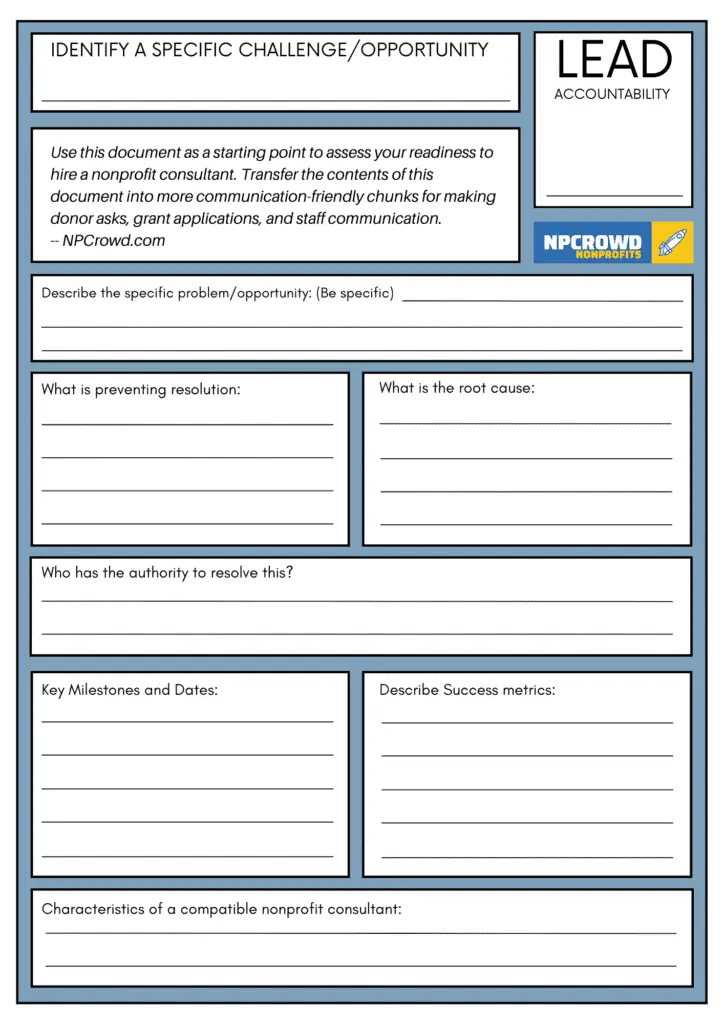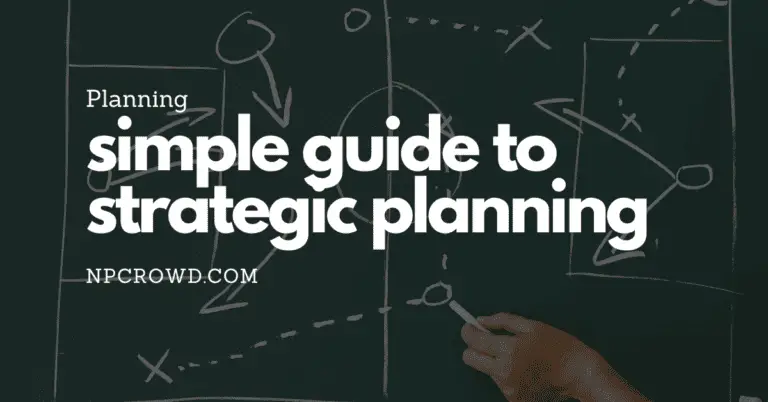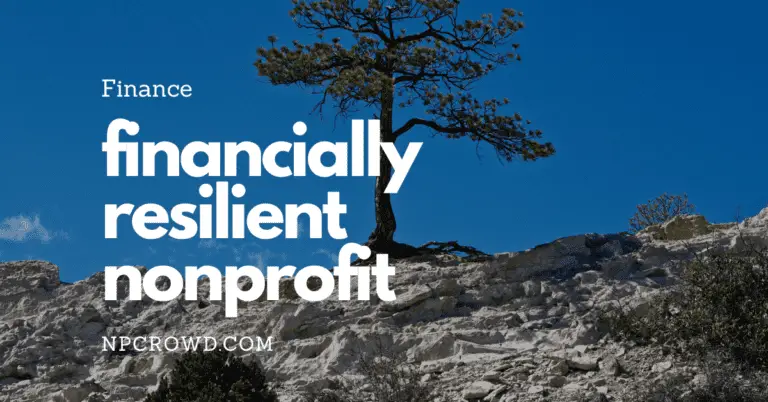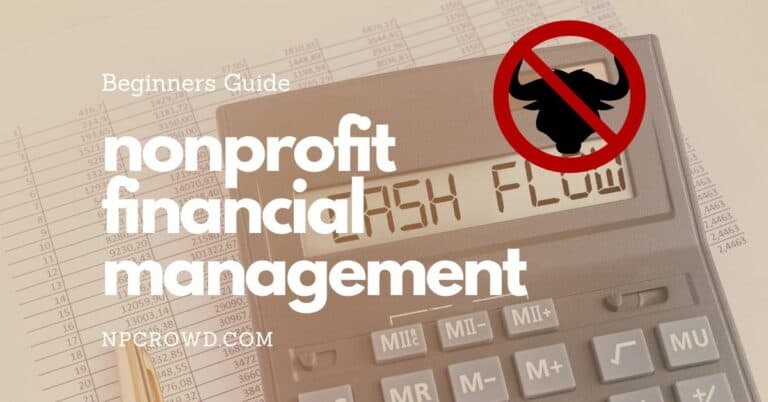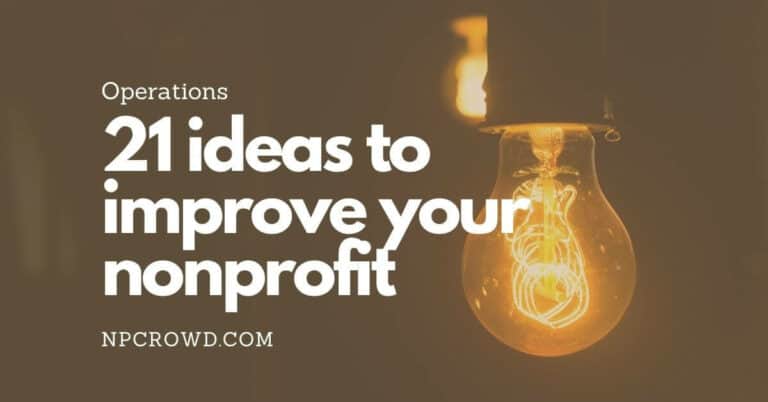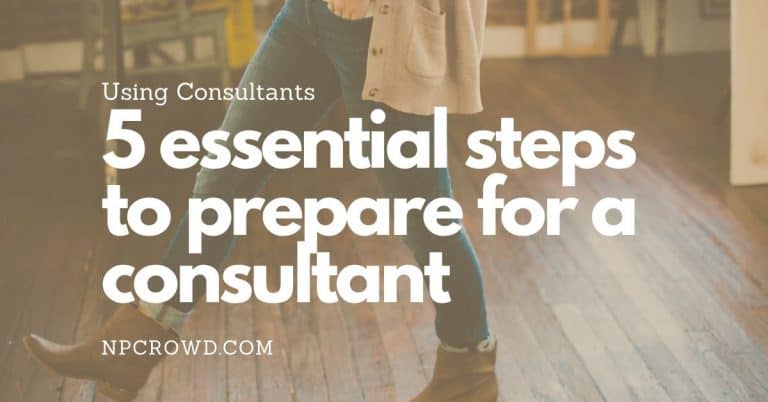Nonprofit Consultant Hiring: Are You Ready – 3 Questions
Disclaimer: This post may contain affiliate links. These links, if used and purchases made, we may earn a small commission. These affiliate programs do not impact the recommendations we make or the resources we refer you to. Our focus is on providing you the best resources for your nonprofit journey.
Knowing when to hire a nonprofit consultant is critical to success. Are you actually ready to benefit from the expensive engagement? That’s what we are tackling today.Nonprofits should hire a nonprofit consultant only when they have identified a specific challenge or opportunity to solve, have full funding of the engagement expenses, and executive leadership is ready to accept change, including their own. Failure to meet any of these criteria can decrease the potential of success by over 53%.
Don’t guess at your readiness, know. These three questions will help guide you to the answer BEFORE you sign a contract.
Are You Ready To Hire A Nonprofit Consultant?
Making the decision to hire a nonprofit consultant is a big step. Time and time again, I see and hear about nonprofits hiring too late or too early.
Hire a consultant too late, and you may have to re-do work you already tried on your own. In some cases, you’ll find you don’t need the same organizational structure and existing positions may need to go away. At other times, waiting too long means lost opportunities that can never be regained.
On the flip side, hiring a consultant too early can result in beneficial recommendations of the consultant being dismissed or with differing expectations of outcomes between the organization and the consultant.
So, when is a nonprofit ready to hire a consultant?
It comes down to three primary evaluation points to determine where you and your organization are.
- A specific challenge or opportunity is identified.
- Engagement costs are fully covered.
- You are prepared to change.
These evaluation points help ensure that success is defined for the engagement and everyone can see what the desired outcomes are. They ensure you are not reliant on the success of the engagement to cover the expenses. And, that you and your team are in the right frame of mind to start doing some things differently than you’ve ever done them before.
If you are missing any one of these points and your chances of a successful engagement plummet.
Let’s look at each one in more depth.
1. Identify a specific challenge or opportunity
Thinking about contracting a nonprofit consultant means you feel there is something they can help you and your organization accomplish or solve. That’s a good start.
But what specifically are you wanting them to help you achieve? Think hard about that.
Unfortunately, it is not uncommon for consultants to engage a client with only a high-level conversation about a general problem area or opportunity. Fast forward 120 days later and there is tension between the Executive Director and the consultant.
Why? Because they both had different sets of specific expectations about what would be accomplished. They weren’t on the same page in the beginning, so how could they be at the same place 4 months later?
That is why knowing the specifics are so important upfront.
When first thinking that outside help is needed, I suggest you and your team answer the following questions in detail.
- What specific problems or opportunities are we wanting help to solve or accomplish? (List each one)
- What components have prevented you from solving/accomplishing this yourself? (Be vulnerable and specific)
- What is the root cause of the problem / What is the root nature of the opportunity (Be unapologetically raw)
- Who has the authority to fix this / to make decisions? (Where is the accountability for success in your org on this topic)
- When must this issue be resolved / opportunity taken? (What’s the drop-dead date to complete)
- What are the key milestones along the way and when must they be completed?
- What does success look like? (Specific, measurable outcomes)
By taking significant time to document your thoughts on these questions, you are creating a playbook that you can share with prospective consultants while you are interviewing them.
This document is also a checklist to make sure the specific outcomes needed and the timeline to achieve them are included in your engagement agreement.
Doing this will significantly improve your ability to hold consultants, your team, and yourself accountable which increases the potential of a successful engagement.
As a help to get you started, we created a downloadable PDF that is both friendly and not overly “corporate” looking.
It makes a great handout for your team to brainstorm their answers in a group setting for 15-minutes.
Then pick all of them up and have them take a 15-minute break. Read through them and make notes about common themes, concerns, and potential blockers.
Bring the team back and share your summary and then let the discussion happen naturally.
2. Engagement costs are fully funded
Hiring a nonprofit consultant is an investment in you, your team, your organization and ultimately, it is an investment in those whom you serve.
These engagements will run thousands, if not tens of thousands of dollars or more depending on the type of consultant, type of engagement, outcomes, and length of engagement.
ALSO READ: How much do nonprofit consultants charge?
For this reason, hiring a consultant should be well thought out and the expected return on investment reviewed.
One challenge we here nonprofits sometimes make is to plan on revenue increases from the engagement to cover the cost of the engagement with the consultant. Don’t fall into this trap. Don’t let a consultant lead you to bank on their success in order to afford them.
Do not leverage “hoped for” future revenue against your “contractual obligation” to pay the consultant.
Tom Lucas
While it is true that a consulting engagement should provide more value to an organization than the cost of the engagement itself, you should not leverage this “hoped for” future against your “contractual obligation” to pay the consultant.
The best practice is to have the dollars in the bank to cover the entirety of the consultant engagement fees and total expenses.
You may be saying, “Tom, well then how do I do that?”
Well, it could mean you have put unrestricted revenue aside as part of a growth fund or operating reserves. That’s great! Keep it up.
But there is another way I’ve seen nonprofits cover the cost that has worked very well for everyone involved.
That method is to seek a restricted gift for the specific purpose of the engagement. There are business people who understand what it takes to grow, to move to the next stage of organizational development, or to take on a new opportunity that has popped up.
These smart business people, who are also aligned with your mission can see great value in covering the consultant’s expenses as a way of growing your organizational capacity. They can see a multiplication of their investment over time in the increased impact of your mission.
So, think about specific asks of specific donors who get it.
Lastly, you may look at grants. In particular, capacity-building grants as a way to cover the costs of a nonprofit consultant.
ALSO READ: Capacity Building grants. What are they and where to find them?
These grants are a fabulous opportunity because they are specifically designed to help nonprofit organizations increase their capacity to do more good. Increasing the impact your organization can have is something these foundations might be interested in supporting.
That is also where the questions you answered in Step 1 above will help when completing the grant applications, or preparing materials for the ask with a donor. Doing your homework will pay off.
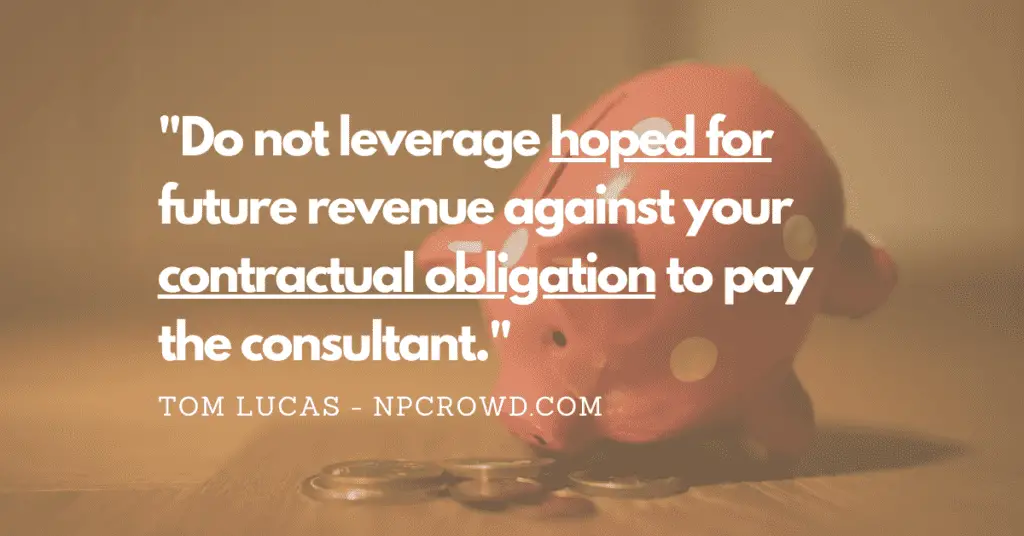
3. Are you prepared to change?
This last hurdle to jump before you are ready to engage a nonprofit consultant may be the hardest step in the process.
This step is all about “readiness to change”.
- Is your executive team ready to change?
- Is your organization prepared to change?
- Are you, truly, ready to change?
Each question is important to assess your readiness to maximize a consulting engagement.
Is your executive team ready to change?
Really! Are they onboard and have then been through the communication process to understand that change will be the result of the engagement? That change may mean that processes, ideas, programs that they lead or even built will need to work differently by the end of the engagement.
I recommend talking with your leaders individually and as a team in order to do three things:
- Listen to feedback that might be included in the engagement. Give kudos along the way.
- Discover any sacred cows. What is being held on to in an unhealthy way?
- Set the expectation that you, and they will be committed to doing what is best for the organization.
Doing this gathers good ideas, identifies touchy subjects, and ensures all your leaders know they need to be in the boat paddling with you and not on the shore watching the rest of the team go down the river.
Is your organization prepared to change?
Have you and your leadership team communicated in an intentional way over a period of time that there is a problem to solve or an opportunity to review? Have you prepared the organization with awareness, listening, and expectations?
Much like ensuring your leadership team is ready, it is important to get your entire organization ready.
That doesn’t mean that they need to know every detail nor that they have to agree with all the changes, but some of the best ideas for change will come from your frontline staff.
Plus, change is hard. Read anything on change management and you’ll hear a common thread around communication, communication, and more communication.
Start early by letting your organization know that they are doing great work. You have heard them and understand that you need help to review an opportunity or to grow to the next stage in your organization’s development.
Anything you can do to let them start hearing now that change is positive change is coming to the organization is good. There is a natural grieving process that some of your team will need to go through when letting go of how things have always been done.
Start early and keep the communication coming throughout the process.
Are YOU ready to change?
You knew this was coming, but it really is the hardest assessment.
Order for a nonprofit consulting engagement to be successful, you have to be ready to make changes yourself. Sometimes the changes are you changing how you think about something, how you manage, how you lead, your original vision of how your team would operate.
Are you really ready to open up, be transparent with the consultant and hear tough feedback in return?
Some of the best consultants are not going to agree with you constantly. They are there to help you and that will mean digging in with staff and seeing how things align with what you told them.
They may offer coaching, suggestions to you about how you work.
Other engagements may mean changing your donor acknowledgment process or changing a program.
But, the main question remains. Are you willing to listen and adjust based on the recommendations of the consultant?
If the real answer is no, then don’t spend the money on a consultant. If you reach a point of knowing you need help or that your way is holding the organization back, take a deep breath and be ready to learn and listen.
You don’t have to have all the answers!
Wrap Up
The fact that you are wondering about the need for a nonprofit consultant is good. Kudos to you for setting pride aside and looking to get answers to growing your social impact.
Hiring a consultant too soon or too late can diminish the results of a consulting engagement. your readiness can be assessed in just three questions: has a specific problem/opportunity been identified, are the consulting costs already funded, and are you ready for change.
I pray the details above help you discern your readiness in order to maximize the stewardship of donor funds and grow the good work you are doing in the world.

